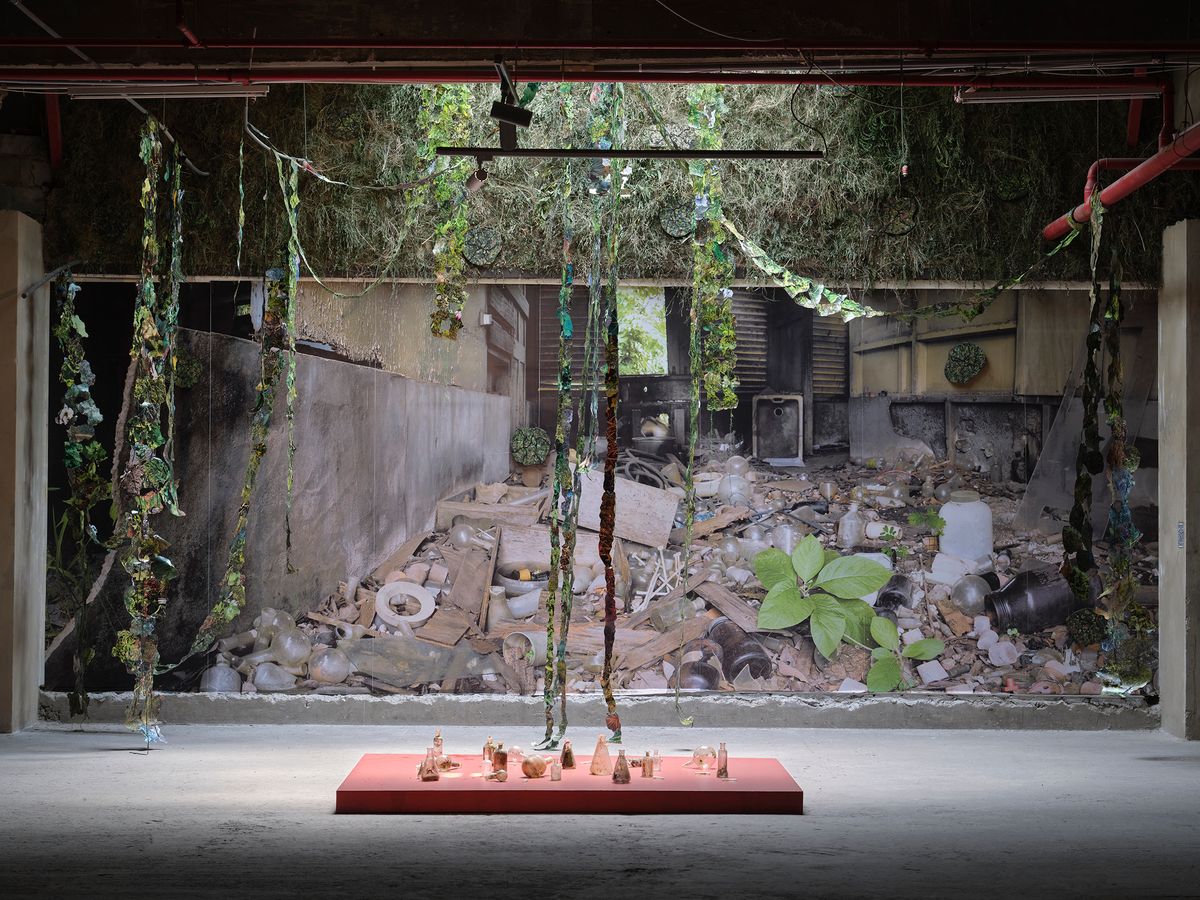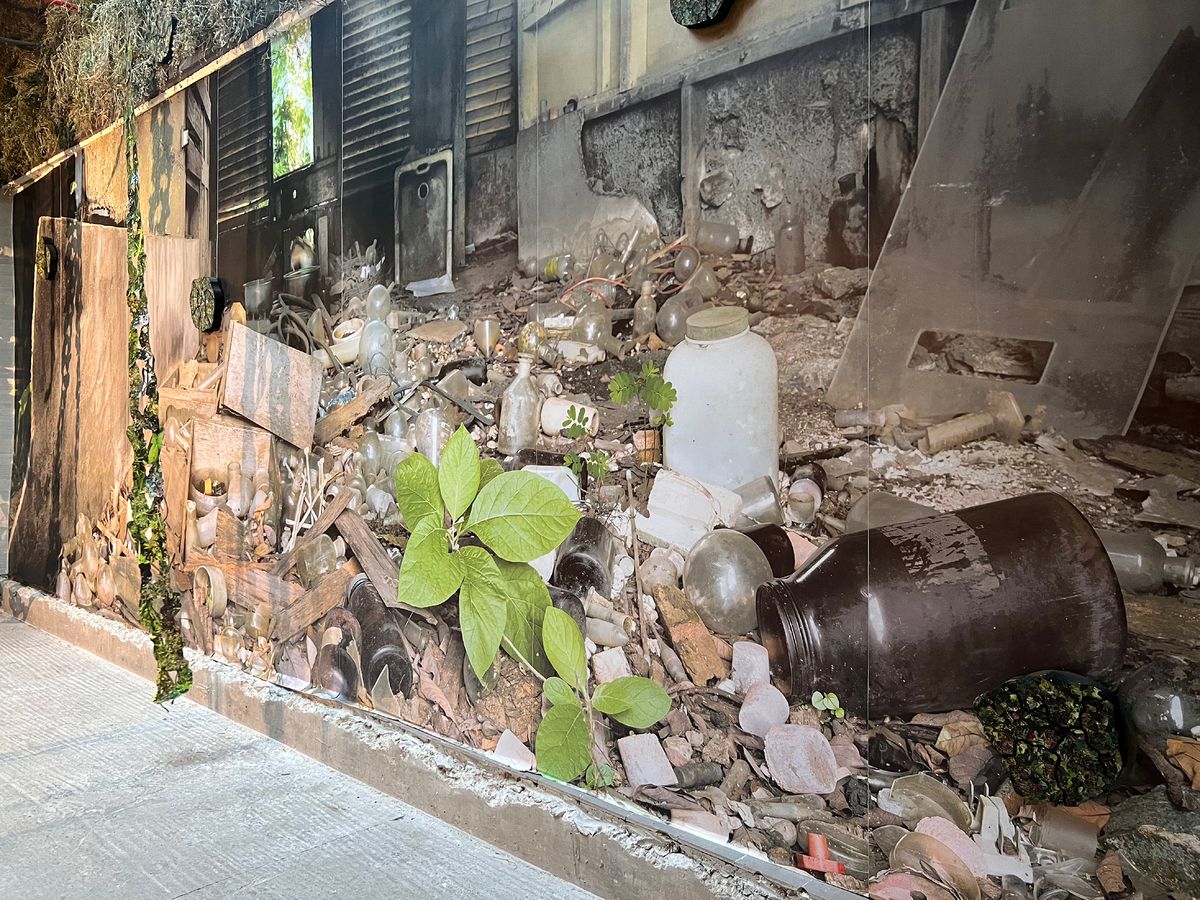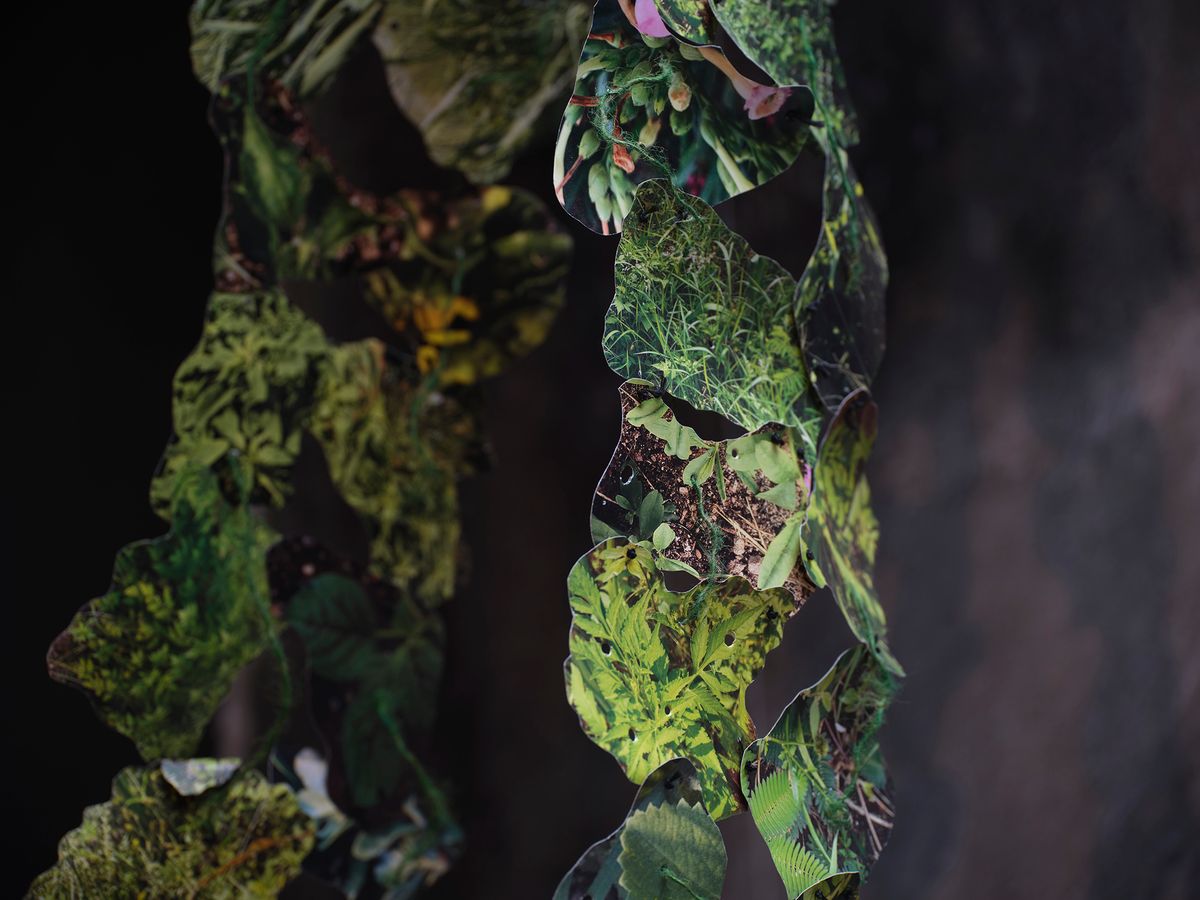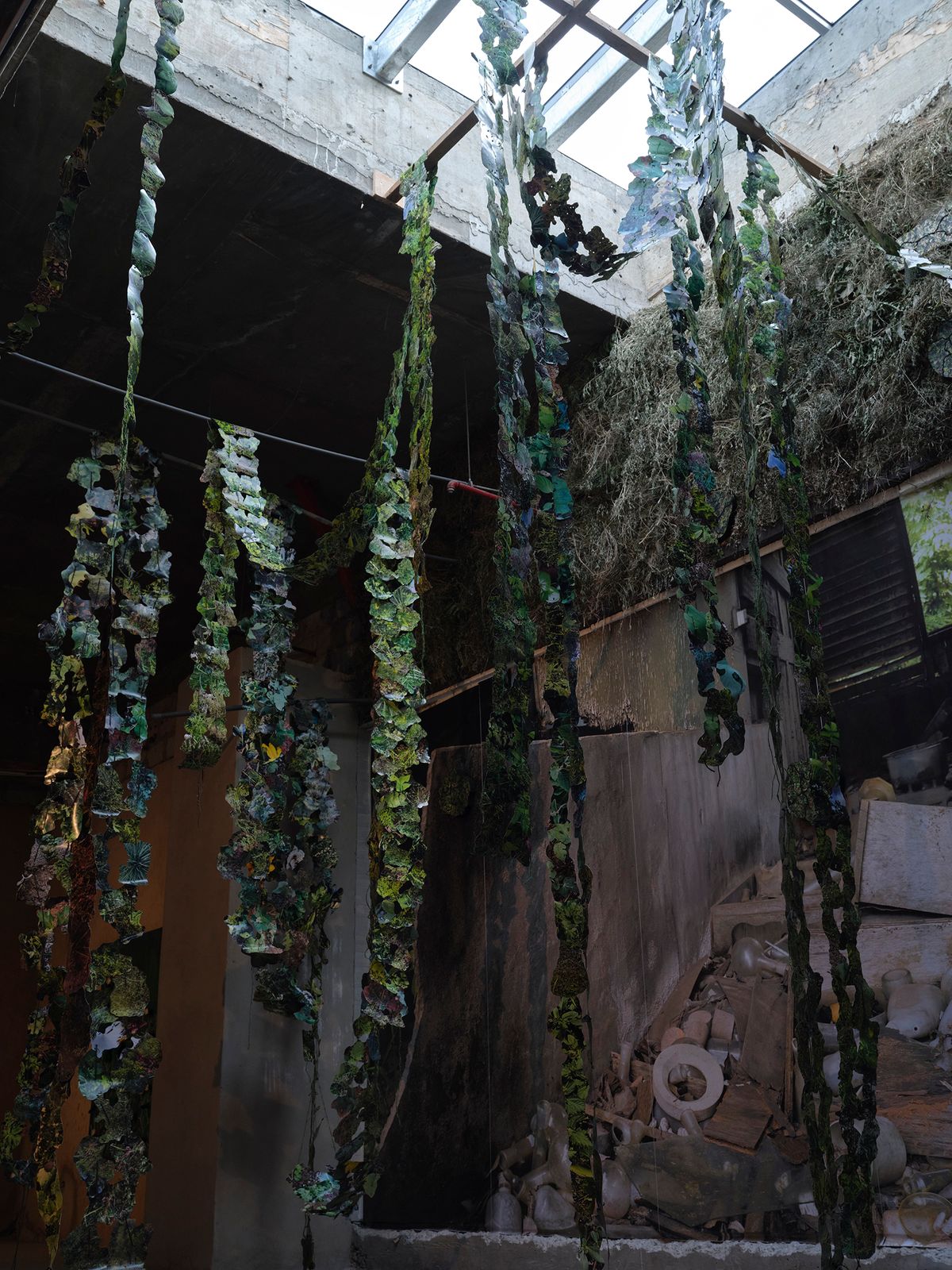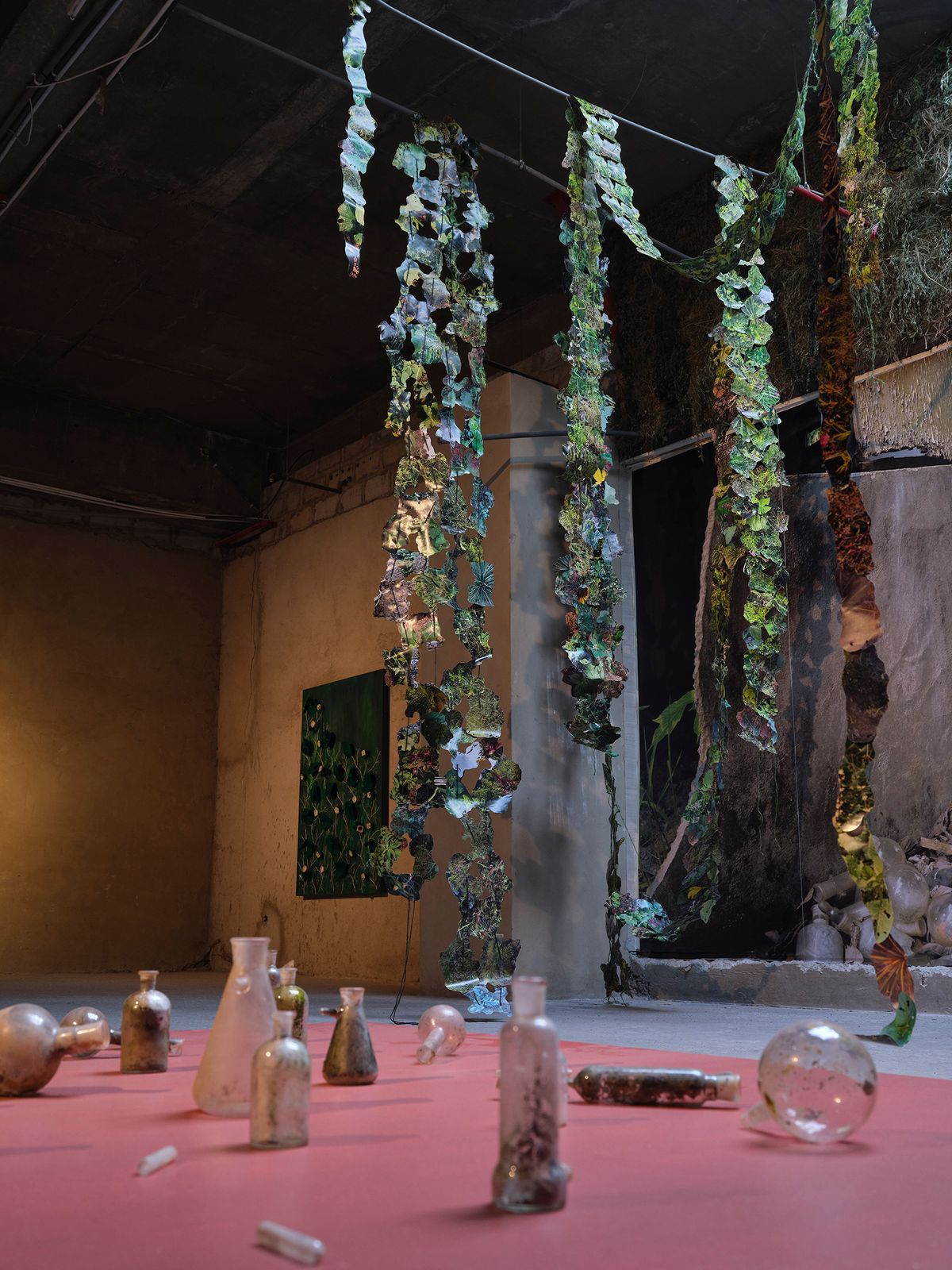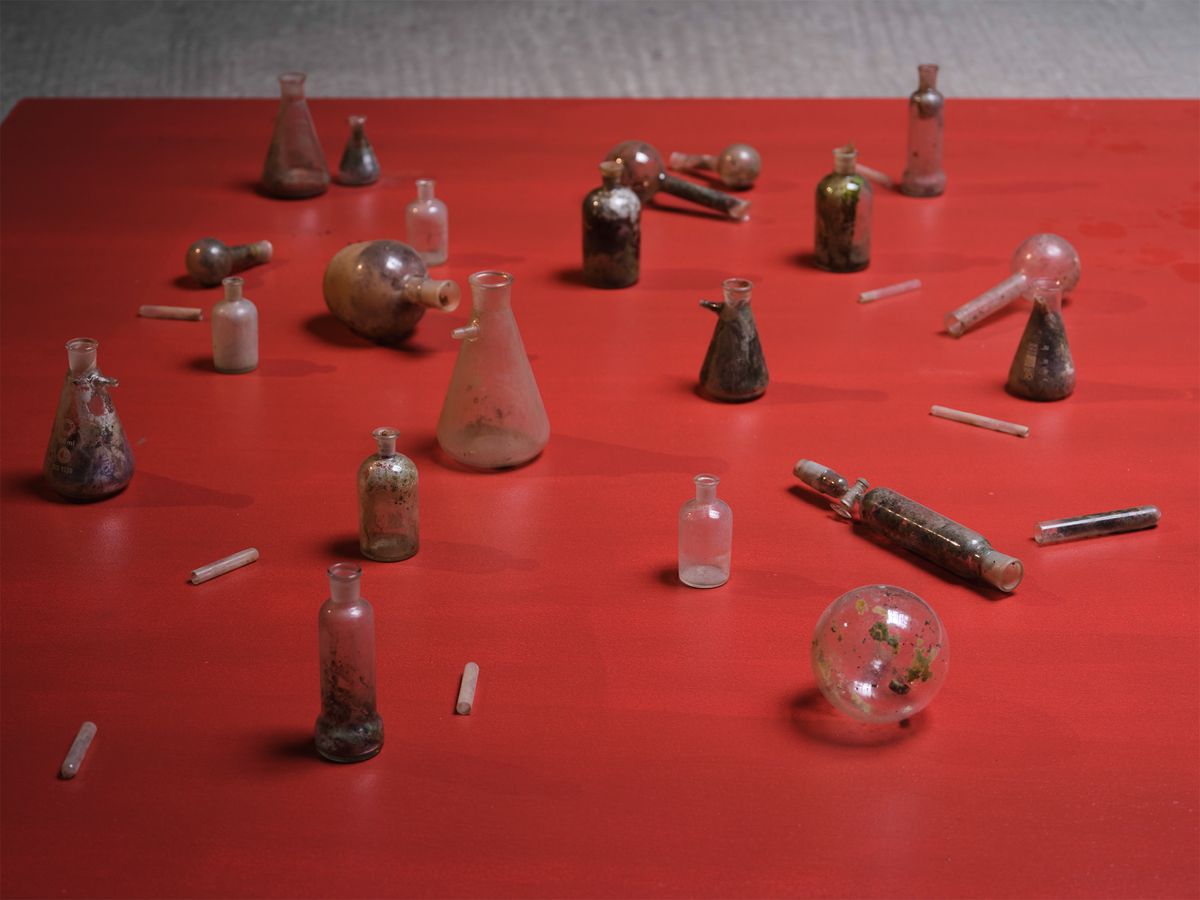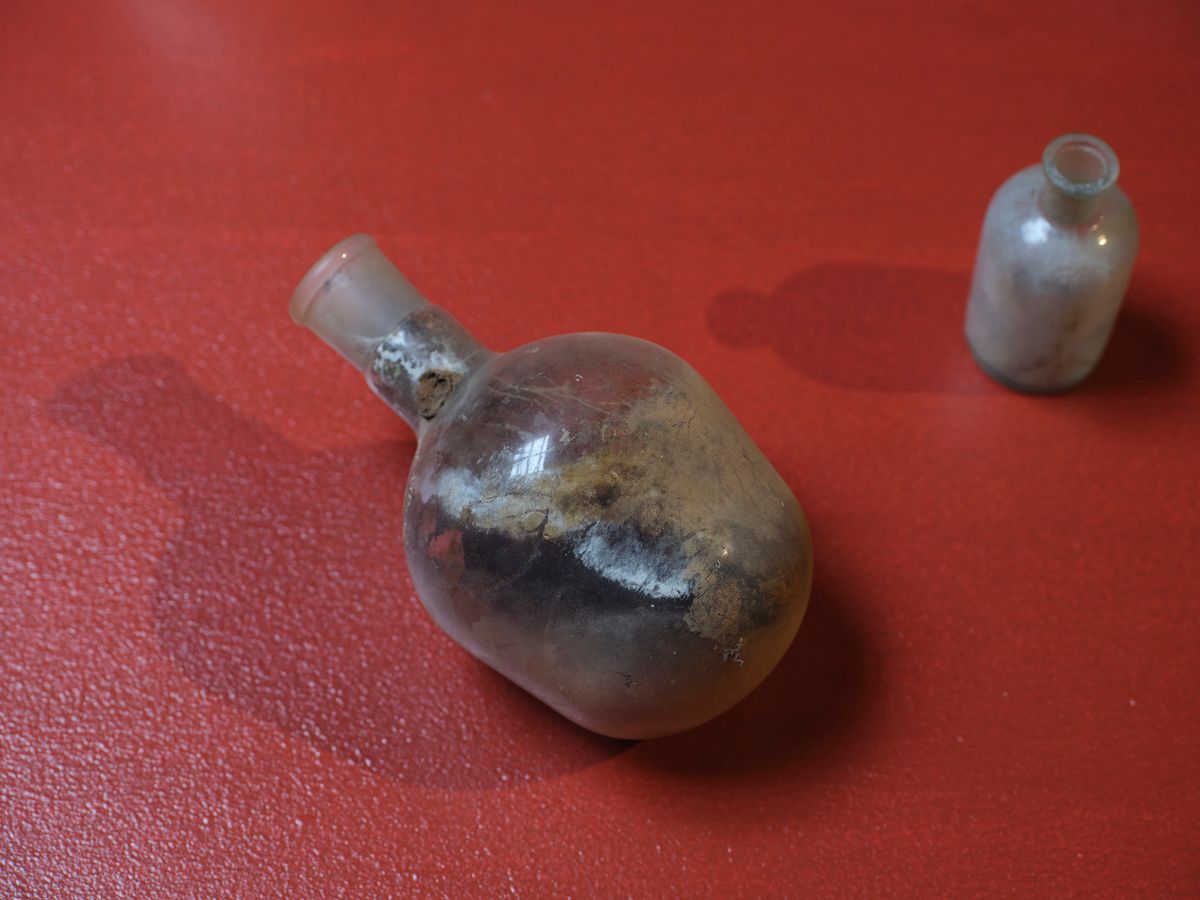Interruptions: An Alchemical Encounter
Interruptions: An Alchemical Encounter invites viewers to explore a space within a space—a wallpaper image of an abandoned laboratory on the campus of the Kwame Nkrumah University of Science and Technology (KNUST) in Kumasi, Ghana. This once-thriving space, engineered by humans for human use, now lies in decay. The lab's beakers and scientific apparatus—manufactured in England and Germany—speak to a legacy of human innovation and inquiry. Yet, through the passage of time and neglect, nature has reclaimed this space, weaving its own stories into the fabric of what remains.
In the absence of human oversight, the elements—wind, sun, rain—have redirected the narrative of this laboratory. It is no longer a space for human interaction; instead, it has become a sanctuary for nonhuman life. Broken vessels cradle compounds such as aluminum oxide, as the remnants of tables and shelves disintegrate, overtaken by moss, plants, and insects. The shards of glass, once a tool for research, now make it difficult for a human visitor to walk through, exposing a disjunction between the human and nonhuman realms. This space, once designed for human habitation and inquiry, holds no room for us; it has metamorphosed into a new heterotopia—a place where diverse, unexpected realities intersect.
In a parallel exploration, strands of “green rivers” hang from the skylight - photo collages of my garden in Kumasi over a two-year period. I documented these cycles of growth—both cultivated and wild—allowing nature to dictate its own narrative, free from human intervention. Here, in this garden, a different heterotopia thrives, echoing the themes of agency and coexistence.
Nestled within an assemblage of entwined plants above the wallpaper, small redwood pieces crafted in the shapes reminiscent of islands add another layer to the installation. Each piece is adorned with pixel-sized images of my garden, collectively forming a new composition.
Interruptions emphasizes the alchemical process: the fusion of two distinct heterotopias to create a new, transformative space. By juxtaposing the remnants of the laboratory—the beakers and apparatus—against the green rivers and the collages on redwood, I aim to construct an entirely new ecosystem, perhaps a crossroads where ideas flourish and new questions arise. Questions such as what truths emerge when European scientific methods are imposed in a West African context? Is this an imposition or a valuable exchange of ideas? The garden, a microcosm of diverse plant life—many non-indigenous to Ghana—invites reflection on the historical currents that brought these species here. From the transatlantic slave trade and missionary endeavors to the influence of scientists and horticulturalists, the imprints of history are palpable in both the lab and garden.
